AeroScout BS2032-0 AeroScout T2 Tag User Manual AeroScout T2 Tag User s Guide
AeroScout AeroScout T2 Tag AeroScout T2 Tag User s Guide
Users Guide

1-1
A
A
Ae
e
er
r
ro
o
oS
S
Sc
c
co
o
ou
u
ut
t
t™ T2 T
T
Ta
a
ag
g
g
Model No. BWH3000
User’s Guide
Version 1.0
Copyright 2003-2004 BlueSoft Inc. All rights reserved.
AeroScout™ is a trademark of BlueSoft Inc. Other brand products and service names are trademarks or
registered trademarks of their respective holders.
The information and know-how included in this document are the exclusive property of BlueSoft Inc. and are
intended for the use of the addressee or the user alone. The addressees shall not forward to another their right of
using the information, know-how or document forwarded herewith, in whole or in part in all matters relating or
stemming from or involved therein, whether for consideration or without consideration, and shall not permit any
third party to utilize the information, know-how or the documents forwarded herewith or copies or duplicates
thereof, unless at the company’s consent in advance and in writing. Any distribution, advertisement, copying or
duplication in any form whatsoever is absolutely prohibited. The Company reserves the right to sue the
addressee, user and/or any one on their behalves, as well as third parties, in respect to breaching its rights
pertaining to the intellectual rights in particular and its rights of whatever kind or type in the information, know-how
or the documents forwarded by them herewith in general, whether by act or by omission.
This document is confidential and proprietary to Bluesoft Inc. and is not to be distributed to any persons other than
Bluesoft customers or other persons appointed in writing by Bluesoft Inc.
Bluesoft, Inc.
1450 Fashion Island Blvd., Suite 510
San Mateo, CA 94404
USA
(650) 571 0800
www.bluesoft-inc.com
For support, contact Bluesoft at email support@bluesoft-inc.com or call +972 8 936 3136 x116.

AeroScoutTM T2 Tag User’s Guide
1-2
Table of Contents
C
C
Ch
h
ha
a
ap
p
pt
t
te
e
er
r
r
1
1
1 I
I
In
n
nt
t
tr
r
ro
o
od
d
du
u
uc
c
ct
t
ti
i
io
o
on
n
n.
.
..
.
..
.
..
.
..
.
..
.
..
.
..
.
..
.
..
.
..
.
..
.
..
.
..
.
..
.
..
.
..
.
..
.
..
.
..
.
..
.
..
.
..
.
..
.
..
.
..
.
..
.
..
.
..
.
..
.
..
.
..
.
..
.
..
.
..
.
..
.
..
.
..
.
..
.
..
.
..
.
..
.
..
.
..
.
..
.
..
.
..
.
..
.
..
.
..
.
..
.
..
.
..
.
..
.
..
.
..
.
..
.
..
.
..
.
..
.
..
.
..
.
..
.
..
.
..
.
..
.
..
.
..
.
..
.
..
.
..
.
..
.
..
.
..
.
..
.
..
.
..
.
..
.
..
.
..
.
..
.
..
.
..
.
..
.
..
.
..
.
..
.
..
.
..
.
..
.
..
.
..
.
..
.
..
.
..
.
..
.
..
.
..
.
..
.
..
.
.1
1
1-
-
-3
3
3
C
C
Ch
h
ha
a
ap
p
pt
t
te
e
er
r
r
2
2
2 T
T
Ta
a
ag
g
g
M
M
Mo
o
ou
u
un
n
nt
t
ti
i
in
n
ng
g
g.
.
..
.
..
.
..
.
..
.
..
.
..
.
..
.
..
.
..
.
..
.
..
.
..
.
..
.
..
.
..
.
..
.
..
.
..
.
..
.
..
.
..
.
..
.
..
.
..
.
..
.
..
.
..
.
..
.
..
.
..
.
..
.
..
.
..
.
..
.
..
.
..
.
..
.
..
.
..
.
..
.
..
.
..
.
..
.
..
.
..
.
..
.
..
.
..
.
..
.
..
.
..
.
..
.
..
.
..
.
..
.
..
.
..
.
..
.
..
.
..
.
..
.
..
.
..
.
..
.
..
.
..
.
..
.
..
.
..
.
..
.
..
.
..
.
..
.
..
.
..
.
..
.
..
.
..
.
..
.
..
.
..
.
..
.
..
.
..
.
..
.
..
.
..
.
..
.
..
.
..
.
..
.
..
.
..
.
..
.
..
.
..
.
.2
2
2-
-
-4
4
4
C
C
Ch
h
ha
a
ap
p
pt
t
te
e
er
r
r
3
3
3 T
T
Ta
a
ag
g
g
C
C
Co
o
on
n
nf
f
fi
i
ig
g
gu
u
ur
r
ra
a
at
t
ti
i
io
o
on
n
n.
.
..
.
..
.
..
.
..
.
..
.
..
.
..
.
..
.
..
.
..
.
..
.
..
.
..
.
..
.
..
.
..
.
..
.
..
.
..
.
..
.
..
.
..
.
..
.
..
.
..
.
..
.
..
.
..
.
..
.
..
.
..
.
..
.
..
.
..
.
..
.
..
.
..
.
..
.
..
.
..
.
..
.
..
.
..
.
..
.
..
.
..
.
..
.
..
.
..
.
..
.
..
.
..
.
..
.
..
.
..
.
..
.
..
.
..
.
..
.
..
.
..
.
..
.
..
.
..
.
..
.
..
.
..
.
..
.
..
.
..
.
..
.
..
.
..
.
..
.
..
.
..
.
..
.
..
.
..
.
..
.
..
.
..
.
..
.
..
.
..
.
..
.
..
.
..
.
..
.
.3
3
3-
-
-5
5
5
C
C
Ch
h
ha
a
ap
p
pt
t
te
e
er
r
r
4
4
4 T
T
Ta
a
ag
g
g
M
M
Ma
a
ai
i
in
n
nt
t
te
e
en
n
na
a
an
n
nc
c
ce
e
e.
.
..
.
..
.
..
.
..
.
..
.
..
.
..
.
..
.
..
.
..
.
..
.
..
.
..
.
..
.
..
.
..
.
..
.
..
.
..
.
..
.
..
.
..
.
..
.
..
.
..
.
..
.
..
.
..
.
..
.
..
.
..
.
..
.
..
.
..
.
..
.
..
.
..
.
..
.
..
.
..
.
..
.
..
.
..
.
..
.
..
.
..
.
..
.
..
.
..
.
..
.
..
.
..
.
..
.
..
.
..
.
..
.
..
.
..
.
..
.
..
.
..
.
..
.
..
.
..
.
..
.
..
.
..
.
..
.
..
.
..
.
..
.
..
.
..
.
..
.
..
.
..
.
..
.
..
.
..
.
..
.
..
.
..
.
..
.
..
.
..
.
..
.
..
.
..
.
..
.
..
.
..
.
.4
4
4-
-
-8
8
8
Replacing the Internal Battery ..................................................................................................4-8
C
C
Ch
h
ha
a
ap
p
pt
t
te
e
er
r
r
5
5
5 T
T
Ta
a
ag
g
g
S
S
Sp
p
pe
e
ec
c
ci
i
if
f
fi
i
ic
c
ca
a
at
t
ti
i
io
o
on
n
ns
s
s.
.
..
.
..
.
..
.
..
.
..
.
..
.
..
.
..
.
..
.
..
.
..
.
..
.
..
.
..
.
..
.
..
.
..
.
..
.
..
.
..
.
..
.
..
.
..
.
..
.
..
.
..
.
..
.
..
.
..
.
..
.
..
.
..
.
..
.
..
.
..
.
..
.
..
.
..
.
..
.
..
.
..
.
..
.
..
.
..
.
..
.
..
.
..
.
..
.
..
.
..
.
..
.
..
.
..
.
..
.
..
.
..
.
..
.
..
.
..
.
..
.
..
.
..
.
..
.
..
.
..
.
..
.
..
.
..
.
..
.
..
.
..
.
..
.
..
.
..
.
..
.
..
.
..
.
..
.
..
.
..
.
..
.
..
.
..
.
..
.
..
.
..
.
..
.
..
.
.5
5
5-
-
-9
9
9
Radio Specifications ................................................................................................................5-9
Environmental Specifications....................................................................................................5-9
Safety and Warnings .............................................................................................................5-10
C
C
Ch
h
ha
a
ap
p
pt
t
te
e
er
r
r
6
6
6 W
W
Wa
a
ar
r
rr
r
ra
a
an
n
nt
t
ty
y
y.
.
..
.
..
.
..
.
..
.
..
.
..
.
..
.
..
.
..
.
..
.
..
.
..
.
..
.
..
.
..
.
..
.
..
.
..
.
..
.
..
.
..
.
..
.
..
.
..
.
..
.
..
.
..
.
..
.
..
.
..
.
..
.
..
.
..
.
..
.
..
.
..
.
..
.
..
.
..
.
..
.
..
.
..
.
..
.
..
.
..
.
..
.
..
.
..
.
..
.
..
.
..
.
..
.
..
.
..
.
..
.
..
.
..
.
..
.
..
.
..
.
..
.
..
.
..
.
..
.
..
.
..
.
..
.
..
.
..
.
..
.
..
.
..
.
..
.
..
.
..
.
..
.
..
.
..
.
..
.
..
.
..
.
..
.
..
.
..
.
..
.
..
.
..
.
..
.
..
.
..
.
..
.
..
.
..
.
..
.
..
.
..
.
..
.
..
.
..
.
..
.
..
.
..
.
.6
6
6-
-
-1
1
11
1
1
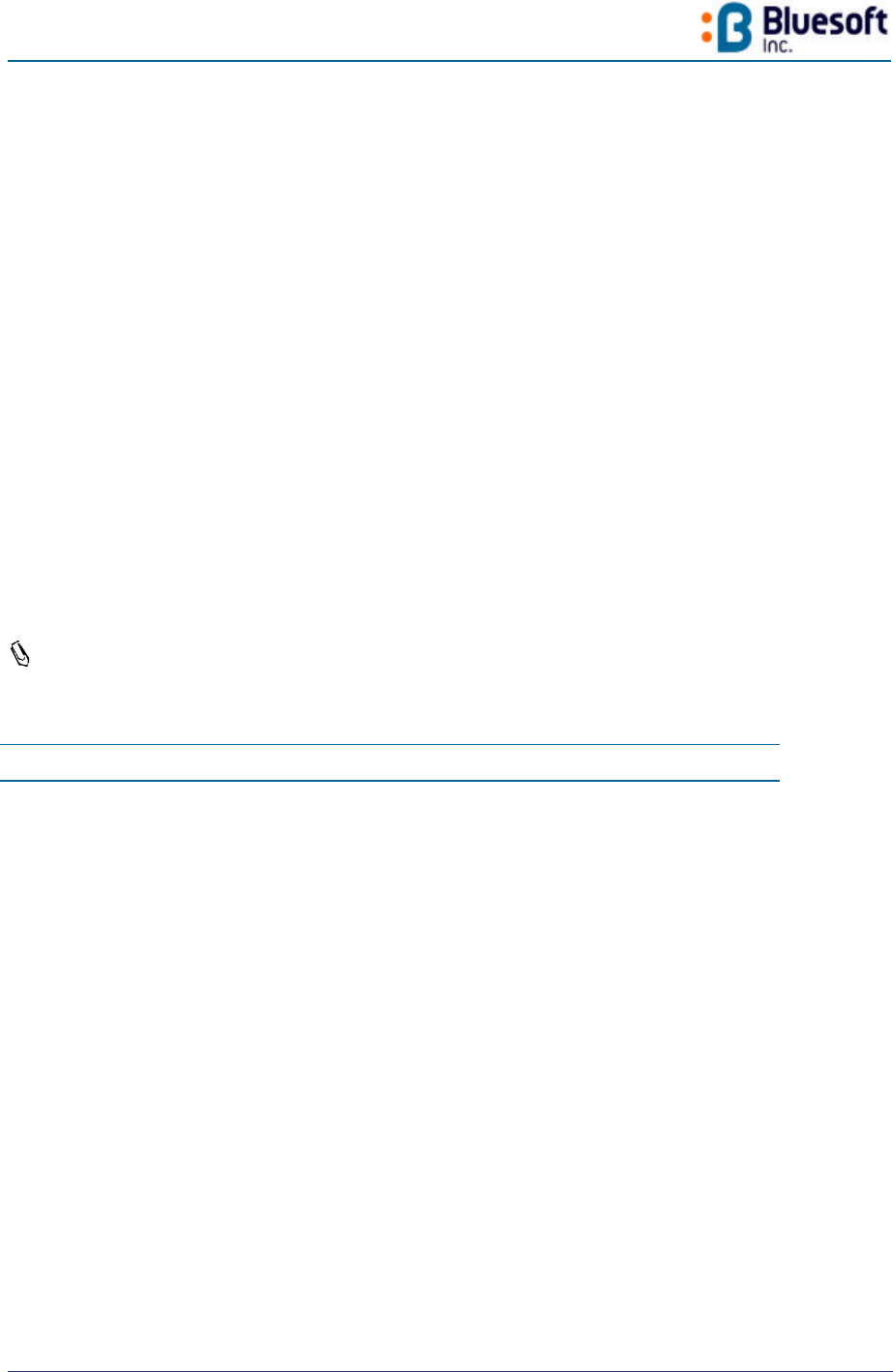
AeroScoutTM T2 Tag User’s Guide
1-3
Chapter 1 Introduction
The AeroScout™ T2 Tag is a key component of the AeroScout™ Location System.
These dedicated battery-powered Tags send Wi-Fi compatible messages at pre-
defined intervals and can be attached to non-Wi-Fi assets in order to locate them.
Tags send messages with their unique ID number that are detected by Location
Receivers and used to estimate the Tag’s location.
The AeroScout T2 Tag enables the wireless network infrastructure to locate people
and assets otherwise not connected to a wireless network. The tag can be used to
track people in many valuable applications - child tracking in amusement parks,
security personnel in enterprises, hospital patients and many more. Various types of
equipment can be tagged. These include vehicles in parking lots; inventory in a
manufacturing line; containers, forklifts and other assets for efficient supply chain
management; shopping carts in supermarkets; and medical equipment in hospitals.
This User’s Guide is intended for the person configuring and maintaining an AeroScout™ T2
Tag.
Please read this manual before attempting Tag configuration or maintenance.
This document contains the following information:
Section Contains
Introduction Introduction to the AeroScout T2 Tag
Tag Mounting Information about Tag mounting options
Tag Configuration Information about performing Tag configuration.
Tag Maintenance Information and procedures for replacement of the Tag
battery
Tag Specifications Radio Specifications, Environmental Specifications,
Safety and Warnings
Warranty Terms of limited hardware warranty
Copyright © 2004 Bluesoft, Inc. All Rights Reserved. Information is preliminary and subject to change without notice. Wi
-
Fi is a trademark of the Wi
-
Fi Alliance.
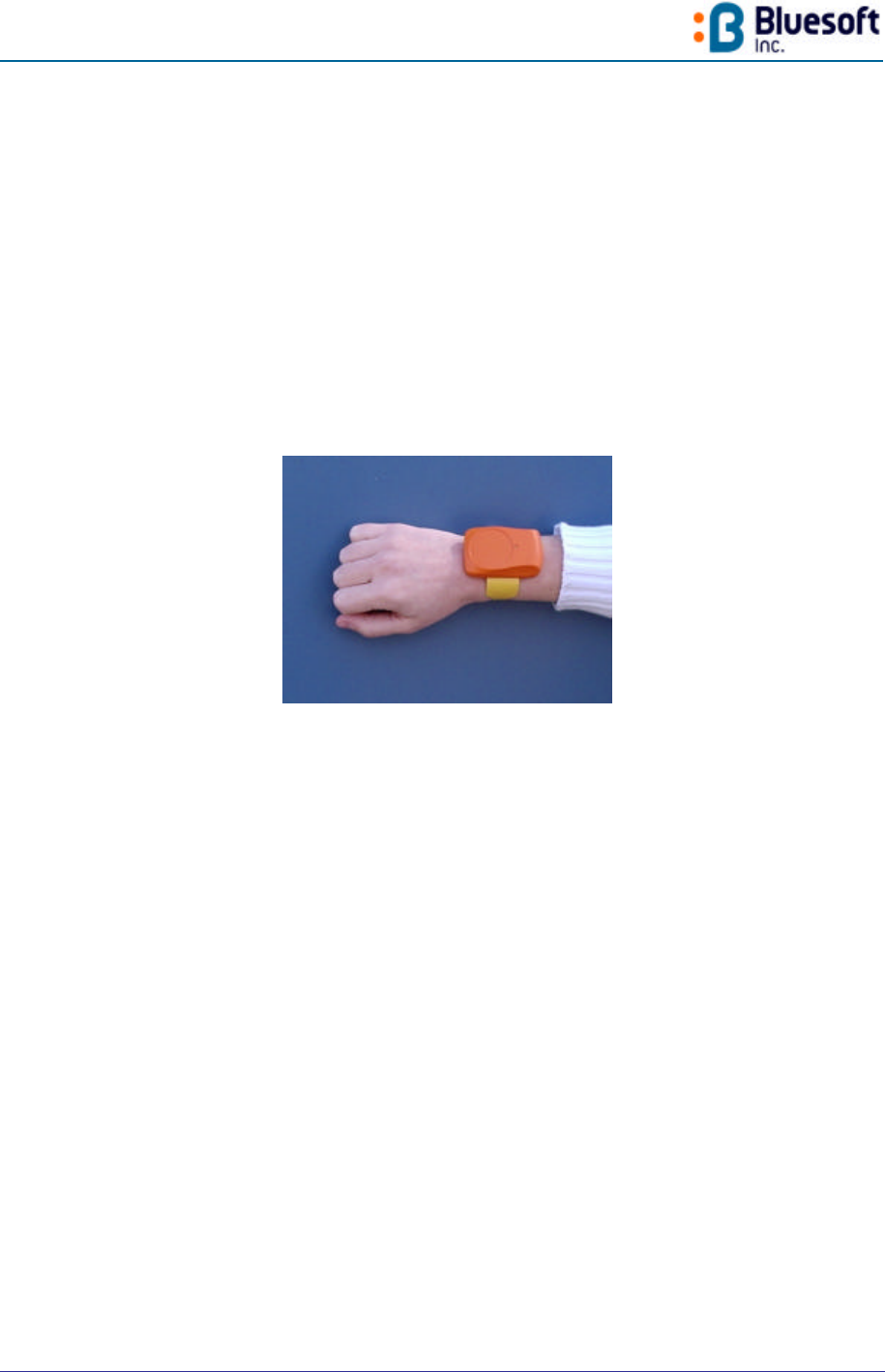
AeroScoutTM T2 Tag User’s Guide
2-4
Chapter 2 Tag Mounting
The AeroScout T2 Tag is enclosed in a compact custom case and offers a variety of
mounting options. The tag’s small size and weight allow mounting even on very small
assets.
Mounting options include:
• A wrist strap that can be placed on a person’s wrist.
• A mounting plate for attaching the tag with a safety pin or clip.
• The tag can also be mounted directly on assets using adhesive tape or Velcro.
Figure 1: AeroScout T2 Tag with Wrist Strap
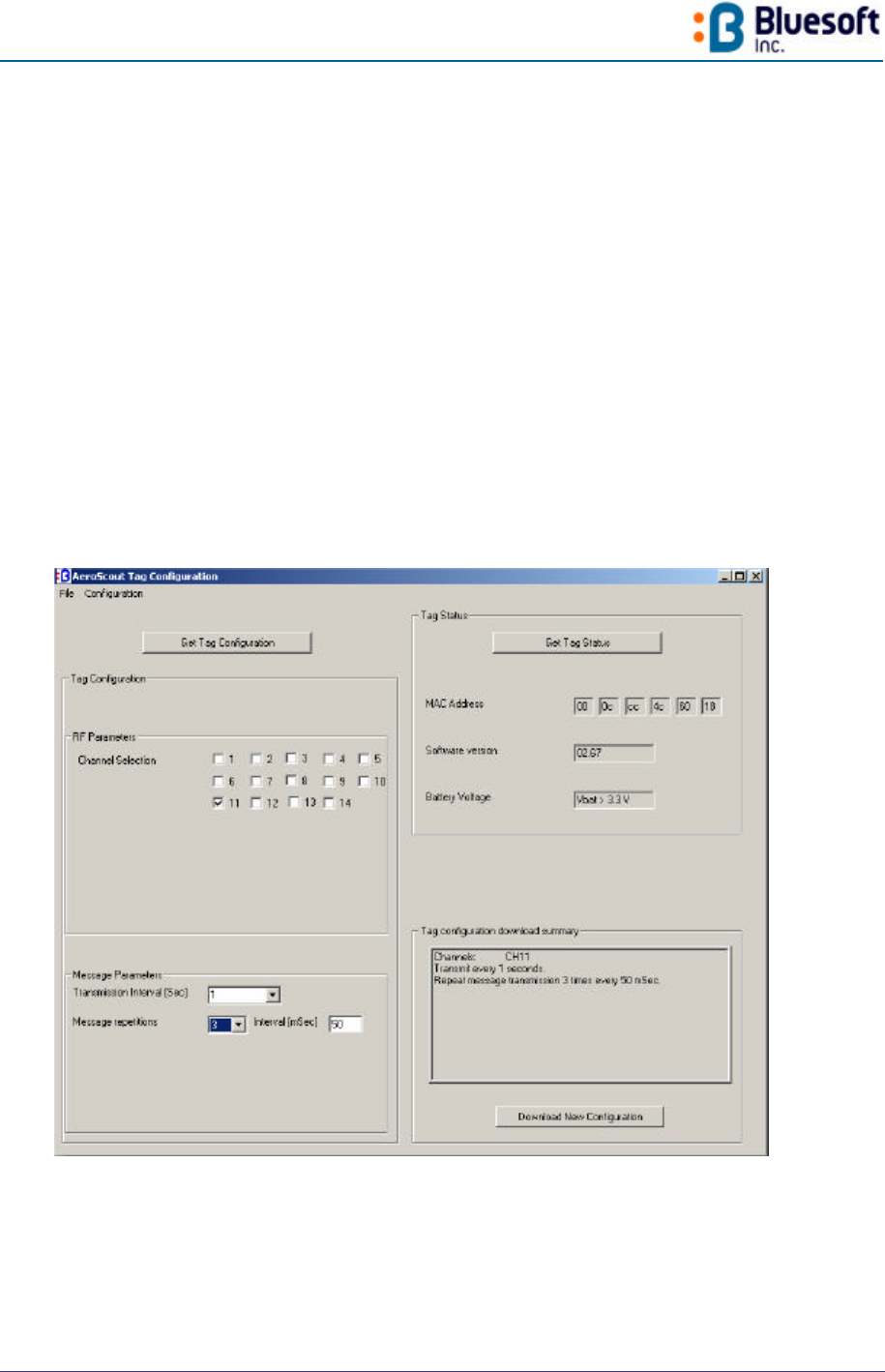
AeroScoutTM T2 Tag User’s Guide
3-5
Chapter 3 Tag Configuration
The AeroScout T2 Tag can be programmed and activated either via a direct serial interface
or a wireless magnetic interface.
The following describes how to establish the communication link between the AeroScout
System Manager and an AeroScout Tag, specify a new configuration of the Tag and
download the new configuration. A Tag can be re-configured manually or by loading a Tag
configuration file stored in your workstation or on the network.
The Tag housing must be opened in order to configure a Tag.
† To configure a Tag
1. Select Configuration Ú Tag Ú Tag Configuration to open the Tag configuration
application. The window shown in Figure 2: Tag Configuration Dialog Box appears.
Figure 2: Tag Configuration Dialog Box
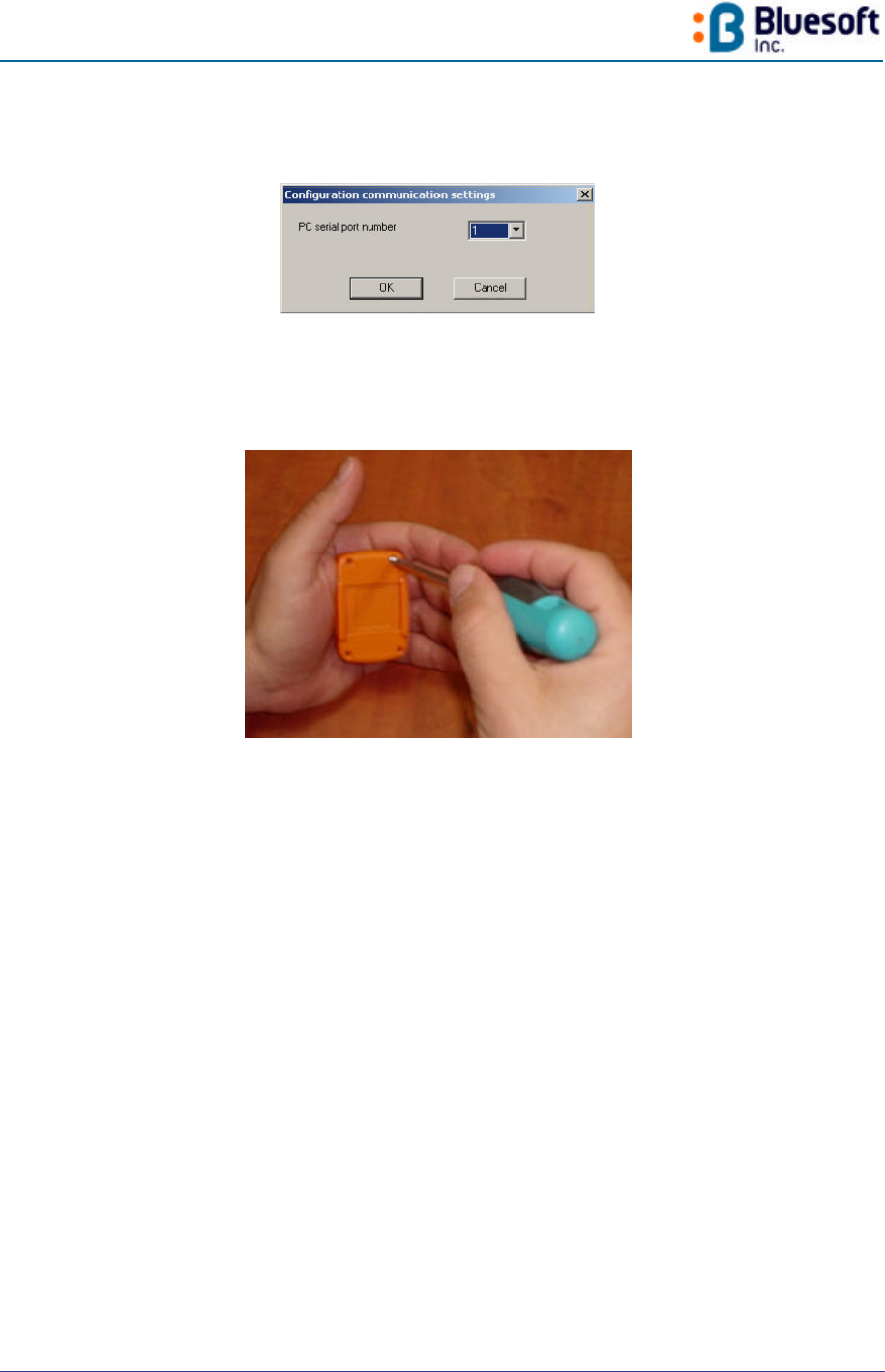
AeroScoutTM T2 Tag User’s Guide
3-6
2. Select Configuration Ú Com setup from the menu bar. The serial
communication port dialog box appears (see Figure 3: Communication Port
Settings).
Figure 3: Communication Port Settings
3. Enter the Serial Port to which the Tag is connected.
3. Remove both screws on the back of the tag with a Philips screwdriver (see
Figure 4: Opening the Tag Case) and open carefully the plastic case.
Figure 4: Opening the Tag Case
5. Connect the RS-232 cable (supplied) to the serial communication port of the PC in
which the configuration application is running on
6. Connect the other end of the RS-232 cable to the serial port socket inside the Tag
(see Figure 5: Connecting the RS-232 Cable to the Tag – make sure that the red wire
of the flat cable is on your right).
7. Press the Get Tag Status to check the connection.
8. Press Get Tag Configuration to upload the Tag configuration and edit it
according to the new configuration desired.
Alternatively, select a configuration file using the File Ú Restore command from the
menu bar and browse the available files to load the desired Tag configuration file for
editing or direct download to the Tag.
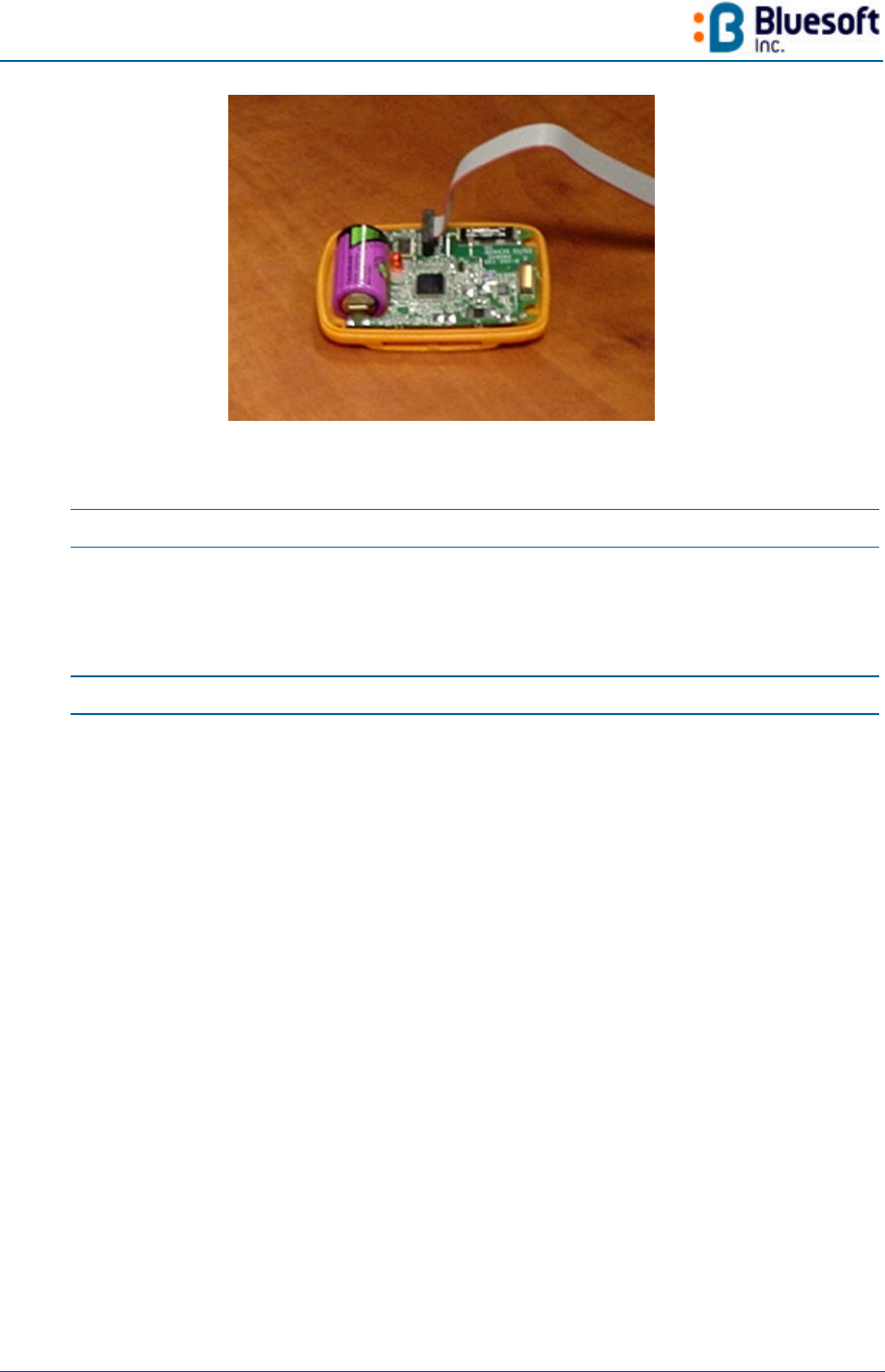
AeroScoutTM T2 Tag User’s Guide
3-7
Figure 5: Connecting the RS-232 Cable to the Tag
9. In the RF Parameters section, set the following options for Tag transmissions:
Option Used to
Channel frequency Select up to 3 Tag transmission channels.
10. In the Message Parameters section, set the transmission message mode as
follows:
Set By
Transmission Interval Select the interval between successive messages [Sec]
Message Repetition Select the number of times the message is being
transmitted within a single burst.
Interval Select the interval between successive messages within
a burst.
11. When complete, review the configuration data in the Tag configuration
download summary section and press Download New Configuration to
download the new configuration to the Tag.
12. Do not leave the serial cable connected to the Tag; make sure you
disconnected the serial cable from the Tag as soon as the programming was
made.
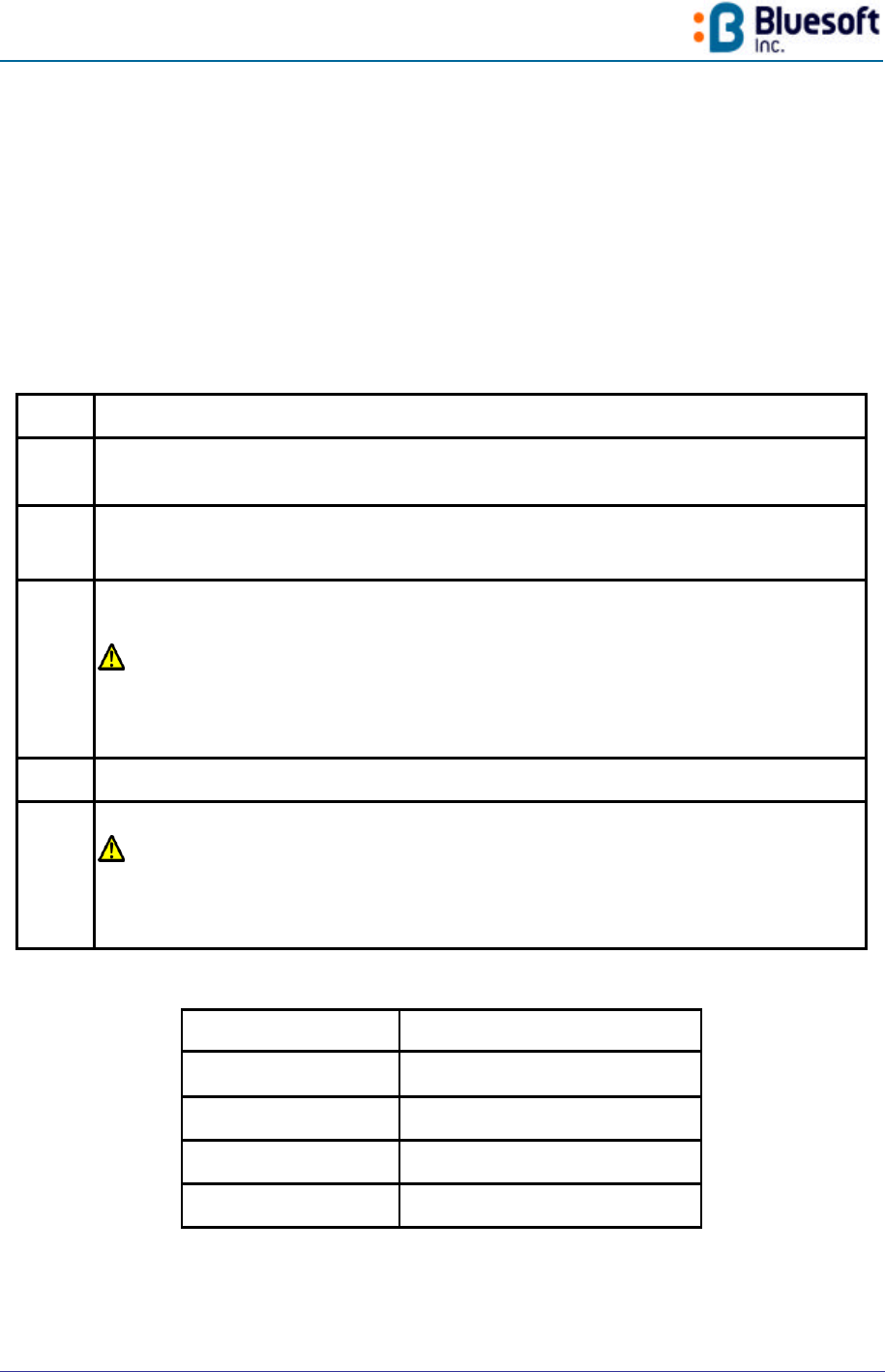
AeroScoutTM T2 Tag User’s Guide
4-8
Chapter 4 Tag Maintenance
Replacing the Internal Battery
The AeroScout™ Tag uses one 3.6V Lithium Thionyl Chloride (LTC) ½ AA size cell.
This internal battery can last up to 3 depending on the transmit interval rate.
Table 1 describes the steps for replacing the internal battery.
Step Instructions
1 Remove the rear panel by unscrewing the case screws (see Figure 4:
Opening the Tag Case)
2
Carefully remove the old battery from the battery holder.
NOTE: Do not use a metal object to remove the battery
3 Install new 3.6V lithium Thionyl Chloride ½ 'AA' size battery in the battery
holder.
WARNING: Use only batteries from the battery replacement table (Table 2)
or others that have been approved by Bluesoft. There is danger of explosion if
the battery is replaced incorrectly or by an incorrect type. Dispose of used
batteries according to the instructions.
4 Close the rear panel by screwing back the screws
5
Dispose of the old lithium Thionyl Chloride battery properly.
Local regulations vary. Federal regulations allow up to 100 kg./month of
lithium thionyl chloride batteries to be disposed in common landfill. All leads
(the terminals) should be taped to prevent short circuit. The user is
responsible for safe disposal.
Table 1 - Replacing the internal batteries.
Manufacturer Battery part number
Tadiran TL-5902
Xeno Energy XL-050F
Sonnenschein SL-350
Saft LS-14250C
Table 2 -Battery replacements - part numbers.

AeroScoutTM T2 Tag User’s Guide
5-9
Chapter 5 Tag Specifications
Radio Specifications
Standards compliance: IEEE 802.11b, Wi-Fi
Frequency range: 2.400 – 2.4835 GHz (Subject to local regulation)
Transmission Power: 19dBm
Regulatory Approvals: FCC Part 15 Sub Part C, EN 300 328-1, EN 301 489-1,
EN 300 330-1
Environmental Specifications
Dimensions: 63mm x 40mm x 17mm (2.48” x 1.57” x .67”)
Weight: 35g (1.2oz.)
Power: 3.6V Lithium Thionyl Chloride ½ AA size cell
Certifications: FCC Part 15 class B, cTUVus (UL 60950 by TUV), CE mark
Operating temp: -20°C to +65°C (-4°F to 149°F)
Storage temp: -30°C to 70°C (-22°F to 158°F)
Operating humidity: 0% to 95% Non-Condensing
Storage humidity: 0% to 95% Non-Condensing
PC
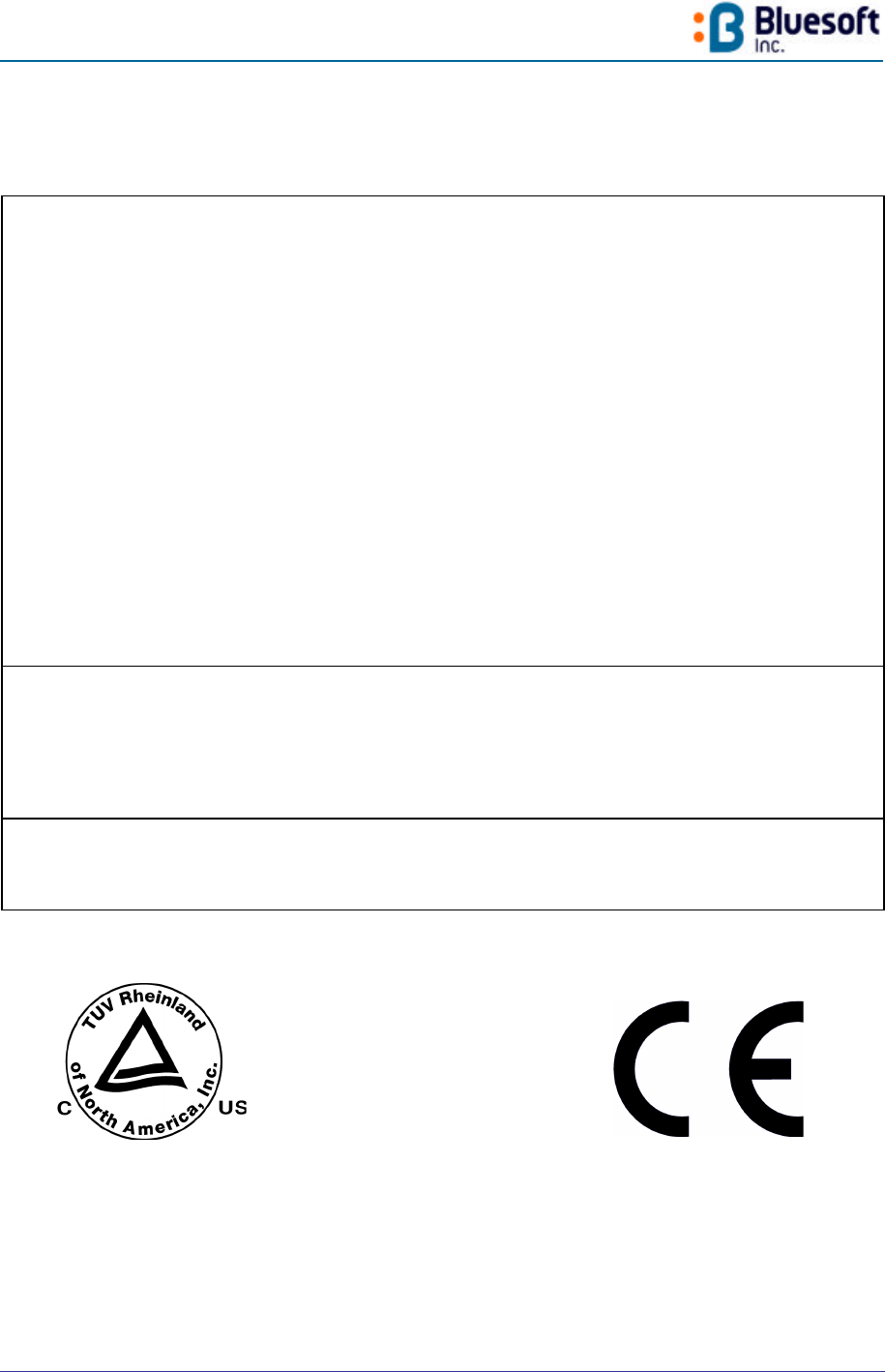
AeroScoutTM T2 Tag User’s Guide
5-10
Safety and Warnings
FCC STATEMENT
This equipment has been tested and found to comply with the limits for a Class B digital
device, pursuant to Part 15 of the FCC rules. These limits are designed to provide
reasonable protection against harmful interference in a residential installation. This
equipment generates, uses and can radiate radio frequency energy and, if not installed
and used in accordance with the instructions, may cause harmful interference to radio
communications. However, there is no guarantee that interference will not occur in a
particular installation. If this equipment does cause harmful interference to radio or
television reception, which can be determined by turning the equipment off and on, the
user is encouraged to try to correct the interference by one or more of the following
measures:
1. Reorient or relocate the receiving antenna.
2. Increase the separation between the equipment and receiver.
3. Connect the equipment to an outlet on a circuit different from that to which the
receiver is connected.
4. Consult the dealer or an experienced radio/TV technician.
This device complies with Part 15 of the FCC Rules.
Operation is subject to the following two conditions:
1. This device may not cause harmful interference
2. This device must accept any interference received, including interference that
may cause undesired operation.
FCC Warning
Modifications not expressly approved by the manufacturer could void the user
authority to operate the equipment under FCC Rules.

AeroScoutTM T2 Tag User’s Guide
6-11
Chapter 6 Warranty
Hardware. Bluesoft Inc. ("Bluesoft"), warrants that commencing from the date of delivery to Customer, and
continuing for a period of ninety (90) days the Hardware will be free from defects in material and workmanship
under normal use. The date of shipment of a Product by Bluesoft is set forth on the packaging material in which
the Product is shipped. This limited warranty extends only to the original user of the Product. Customer's sole and
exclusive remedy and the entire liability of Bluesoft and its suppliers under this limited warranty will be, at
Bluesoft’s or its service center's option, shipment of a replacement within the period or a refund of the purchase
price if the Hardware is returned to the party supplying it to Customer, if different than Bluesoft, freight and
insurance prepaid. Bluesoft replacement parts used in Hardware repair may be new or equivalent to new.
Bluesoft’s obligations hereunder are conditioned upon the return of affected articles in accordance with Bluesoft’s
then-current Return Material Authorization (RMA) procedures.
Restrictions. This warranty does not apply if the Product (a) has been altered, except by Bluesoft, (b) has not
been installed, operated, repaired, or maintained in accordance with instructions supplied by Bluesoft, (c) has
been subjected to abnormal physical or electrical stress, misuse, negligence, or accident; or (d) is sold for beta,
evaluation, testing, or demonstration purposes for which Bluesoft does not receive a payment of purchase price or
license fee.
DISCLAIMER OF WARRANTY. EXCEPT AS SPECIFIED IN THIS WARRANTY, ALL EXPRESS OR IMPLIED
CONDITIONS, REPRESENTATIONS, AND WARRANTIES INCLUDING, WITHOUT LIMITATION, ANY IMPLIED
WARRANTY OR CONDITION OF MERCHANTABILITY, FITNESS FOR A PARTICULAR PURPOSE,
NONINFRINGEMENT, SATISFACTORY QUALITY OR ARISING FROM A COURSE OF DEALING, LAW,
USAGE, OR TRADE PRACTICE, ARE HEREBY EXCLUDED TO THE EXTENT ALLOWED BY APPLICABLE
LAW. TO THE EXTENT AN IMPLIED WARRANTY CANNOT BE EXCLUDED, SUCH WARRANTY IS LIMITED
IN DURATION TO THE WARRANTY PERIOD. BECAUSE SOME STATES OR JURISDICTIONS DO NOT
ALLOW LIMITATIONS ON HOW LONG AN IMPLIED WARRANTY LASTS, THE ABOVE LIMITATION MAY NOT
APPLY TO YOU. THIS WARRANTY GIVES YOU SPECIFIC LEGAL RIGHTS, AND YOU MAY ALSO HAVE
OTHER RIGHTS, WHICH VARY FROM JURISDICTION TO JURISDICTION. This disclaimer and exclusion shall
apply even if the express warranty set forth above fails of its essential purpose.